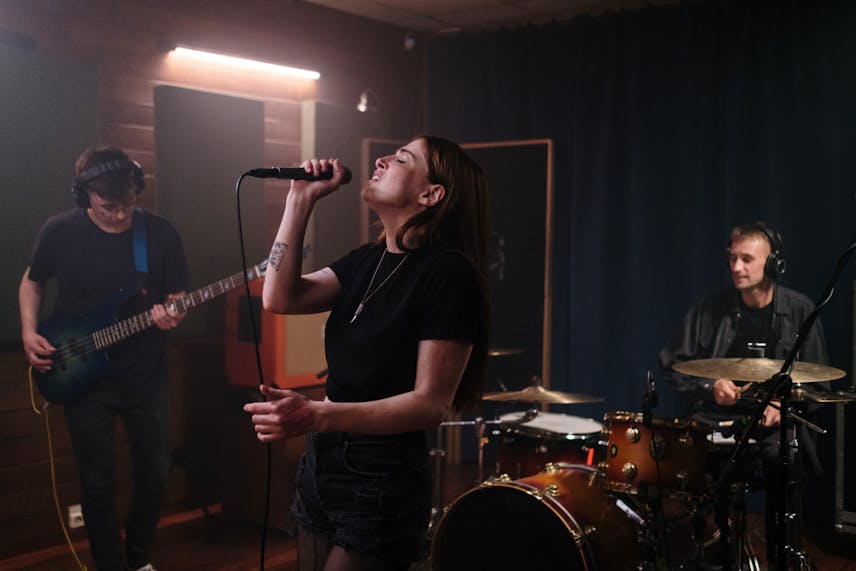When delving into the soothing beats of LOFI music, the subtle yet impactful role of drums cannot be overstated. This genre, characterized by its mellow and downtempo nature, relies heavily on the rhythmic foundation provided by drums to create its signature atmospheric sound. In this post, we’ll explore the intricacies of drums within LOFI tracks and how they contribute to the genre’s unique vibe.
Understanding LOFI’s Percussive Elements
LOFI music, often associated with relaxation and study, uses drums to set a laid-back tone that listeners find both engaging and calming. Unlike in more aggressive genres, the drums in LOFI are not meant to overpower but to blend seamlessly with other instruments, creating a cohesive sonic experience.
The Characteristics of LOFI Drumming
The typical drum setup in LOFI music includes a combination of snares, kick drums, hi-hats, and sometimes percussive accessories like shakers or tambourines. However, it’s not just the instruments themselves but how they are played and processed that defines the LOFI drum sound.
Kick Drums: The kick drum in LOFI often features a muted, low-end thump, which acts as the heartbeat of a track. It’s usually less aggressive than in other genres, providing a steady pulse rather than demanding attention.
Snare Drums: Snares in LOFI may have a softer, more subdued snap. They frequently possess a vintage, sometimes even dusty quality, as if they’re being played on an old record player.
Hi-Hats: Hi-hats tend to be used sparingly, contributing to the rhythm without becoming the focal point. They often have a shuffling quality, enhancing the characteristic swing of LOFI grooves.
Additional Percussion: Shakers, tambourines, and other percussive elements add texture and depth, often used to accentuate certain beats or create a more layered sound.
Production Techniques for LOFI Drums
Production plays a vital role in shaping the drum sounds in LOFI music. Techniques such as side-chain compression, where the kick drum is used to duck the volume of other elements, create a pulsing effect that’s synonymous with the genre. Additionally, producers frequently employ methods to age their drums sounds, like bit-crushing or using vintage samplers, to achieve that classic LOFI warmth.
The Art of Sampling in LOFI
Sampling is a cornerstone of LOFI production, and this extends to drums. Producers often sample breaks from old funk, jazz, or soul records, repurposing these vintage grooves into a modern context. This not only provides authentic textures but also pays homage to the musical traditions that LOFI builds upon.
Creating Mood with Drum Patterns
The tempo and complexity of drum patterns in LOFI play a significant role in dictating the mood of a piece. Slower tempos and simpler patterns are conducive to relaxation, while slightly faster and more complex rhythms can evoke a sense of gentle movement or contemplation.
Tempo: Most LOFI tracks sit in a comfortable tempo range that encourages relaxation without becoming soporific.
Rhythmic Complexity: While some LOFI tracks opt for straightforward beats, others incorporate subtle syncopation or offbeat elements to add interest without disrupting the tranquil vibe.
Conclusion: The Subtle Impact of Drums in LOFI
Ultimately, the drums in LOFI music serve as more than just a rhythmic backbone; they are central to creating the genre’s emotive and nostalgic feel. Through careful selection of sounds, thoughtful production techniques, and intentional patterning, drums breathe life into LOFI tracks, inviting listeners into a world of introspection and tranquility.


